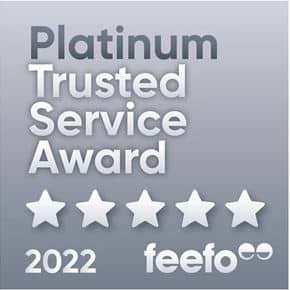Home > Home Loans > No Deposit Home Loans
No Deposit Home Loans
Considering a no-deposit home loan? Here’s everything you should know.
Author
Savvy Editorial TeamFact checked
If you’re struggling to put a deposit together, you’re not alone. For many home buyers saving a big enough down payment is the hardest thing about getting a mortgage.
A no-deposit home loan can help you overcome this hurdle, but it’s only available in select situations, and is subject to strict approval. In this article, we explain how it works and how to know if you’re eligible.
What is a no deposit home loan?
A no-deposit home loan doesn’t require a cash deposit. Instead, you can use equity from another property to secure a new mortgage. There are three main types of no-deposit home loans:
- Investment loans
- Bridging loans
- Guarantor loans
We discuss each of these in more detail below.
No deposit investment loans
Investors may hold multiple properties in their portfolio. They can use the equity in one property to secure the loan on another. When assessing a loan application, the lender will consider the portfolio as a whole and will look at the total equity the investor holds over all their properties.
No deposit bridging loans
Moving house often involves moving between home loans. Trying to pay the mortgage on your old home while saving a deposit for the new one can seem impossible. Bridging loans allow borrowers to use the equity in their old home to secure their new mortgage, with the understanding that they will sell their old home relatively soon.
No deposit guarantor loans
If you don’t have a deposit, you can use a guarantor instead. The guarantor puts up the equity in their home as surety for your loan. It’s important to note that this affects the guarantor’s finances and credit rating.
If you’re not able to meet your repayments, the guarantor will have to cover them. If neither of you can pay, the lender can seize both your home and the guarantor’s home to pay off the debt. When the guarantor tries to apply for other loans, they will need to disclose your loan, and it may limit how much they can borrow.
Once you have paid enough off your loan, the guarantor can ask to be released from the agreement.
How does interest work on a no deposit home loan?
Interest rate options on no-deposit loans are very similar to regular mortgages, though they are a little higher.
You can get a variable interest rate that shifts with the market. Or you can get a rate that is fixed for a period of time (usually around 5 years) before reverting back to the variable rate.
If you are taking out an investment loan or a bridging loan, you may also be offered an interest-only period, during which you don’t have to make principal repayments. As always, it’s important to crunch the numbers and ensure that you can afford the loan, both during the interest-only period, and after.
What are the fees on a no-deposit home loan?
Though you don’t need a deposit, you still have to pay the start-up costs on a no-deposit home loan. These can include the lender’s fees, stamp duty, building inspections, etc. There may also be ongoing administration costs and a fee for removing your guarantor from the loan agreement.
Do I have to get lenders mortgage insurance on a no deposit home loan?
Generally speaking, if you default on your loan, the lender will repossess your house and sell it to get their money back. However, if the market goes down, and your home devalues, the lender may not be able to recoup all their costs. Lenders mortgage insurance (LMI) will cover the shortfall so that the lender is not out-of-pocket.
If you apply for a regular home loan and your deposit is less than 20%, the lender will usually insist on having LMI. If you apply for a no-deposit home loan, the lender will apply the same judgement to the equity that you are using to secure the new loan.
For example, if your parents are guaranteeing a no-deposit home loan, the lender will look at how much equity they are putting up. If it’s not enough to cover 20% of the value of the new property, then the lender will require LMI.
The lender will choose the insurer, and the insurer has the ability to accept or reject the insurance application depending on how risky they feel it is. If the insurer rejects you, the lender can withdraw their approval for the loan.
If the insurance is approved, you will need to pay for it, even though it doesn’t actually protect you, only the lender. For your own protection, you’ll need to consider a different type of insurance such as income protection.
What are my alternatives to a no-deposit home loan?
Save a deposit
It can take a long time, but saving a deposit is the best way to prove that you can afford a mortgage. If you can’t get the money together, you may need to consider reworking your budget or making lifestyle changes, like moving in with your parents.
Use government assistance
There are several government schemes to help you buy a home. These include the First Home Owner Grant to help bulk up your deposit, and the First Home Loan Deposit Scheme to help you obtain a low-deposit home loan. There is also a Homebuilder Grant for people who are looking to build or renovate.
Use superannuation
The First Home Super Saver Scheme helps you save a deposit through your super, and includes tax benefits.
Low-deposit home loans
If neither you nor your family have equity that you can use to secure a no-deposit loan, you may want to consider a low-deposit loan instead. These usually only require a 5% deposit and have most of the same features as a no-deposit home loan.
Your home loan options
Making your first big step towards buying a home? It's crucial to be across your mortgage options as a first homebuyer.
Opting for a variable interest rate on your home loan means it'll fluctuate as the market moves throughout your repayment term.
On the other hand, fixing your rate locks it in for a pre-defined period. This can bring with it greater certainty around your budget.
It's important not to set and forget when it comes to your home loan. If you find a more competitive offer, it may be worth refinancing.
If you're looking to build a new house, construction loans are specifically designed to cater to the different needs associated with doing so.
A guarantor essentially acts as a safety net for your lender, as they sign onto your loan to agree to pay it off should you become unable to do so.
Purchasing a property as an investment brings with it different specifications from a lender. It's crucial to know what your options are.
Businesses big or small may wish to purchase a property for commercial purposes, which are also different from a standard loan.
Your home loan may give you an interest-only option, which allows you to exclusively pay interest on your loan for a set period.
Just because your finances may be slightly more complicated as a self-employed individual doesn't mean you can't take out a home loan.
Some lenders may allow you to apply for a home loan with alternative documents, such as tax returns, BAS and ABN registration.
There are several options for purchasing a property without a cash deposit, such as equity in another property if you or your guarantor own one.
Why compare home loans with Savvy?
100% free
You don't have to pay a cent to compare home loans with us, enabling you to do so at any time.
Paperless quote process
You can fill out a simple online quote via our form without having to worry about sorting through heaps of paperwork.
Trusted lenders
With a panel of reputable mortgage lenders behind us, you can rest assured you'll be comparing high-quality options.
Pros and cons of a no-deposit home loan
PROS
Tax benefits for investors
Investors can use no-deposit loans to claim tax benefits. Your accountant can help you organise this.
Smooth transition between homes
A bridging loan allows people to switch between homes without the financial strain of paying two mortgages simultaneously. It also means you don’t have to rent between homes. You can simply move between your old house and your new one.
Get a foot in the door
Saving for a deposit while paying rent is difficult, and for some people, it’s impossible. A no-deposit guarantor loan can help you get into a new home so that you can put your rent money towards paying your mortgage.
CONS
Higher interest rates
Because lenders consider no-deposit home loans to be risky, they usually charge higher interest rates.
Higher costs
With a no-deposit home loan, you are borrowing 100% of the house price. The more you borrow, the more interest you will need to pay.
Lender’s Mortgage Insurance
LMI can cost thousands and is often required for loans where the deposit is too low, or the collateral equity is not enough to cover 20% of the value of the house.
What our customers say about their finance experience


Savvy is rated 4.9 for customer satisfaction by 4 customers.











